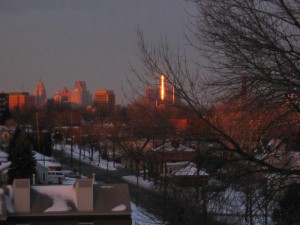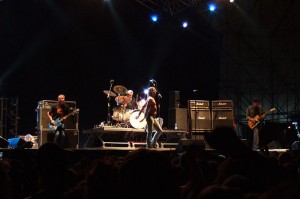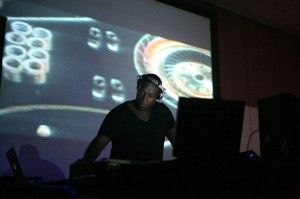This past weekend, when I was touring my book in Michigan, I had the first opportunity in a couple years to visit Detroit.
Of course, the city’s national and international reputation has been legendary for most of its existence, and most recently by its bizarre status as a sort of non-America within America; a disempowered place with almost a million residents, terrible statistics for crime, poverty, and abandonment, and so on. Naturally, the Great Recession and government bailout of the Detroit Three automakers has only solidified this reputation.
Additionally, however, the city looms large on America’s Gothic landscape, perhaps moreso than any other city in the U.S. (although New York and New Orleans will give anyone a run for their money).
From today’s vantage point, Detroit’s Gothic status is artistically-driven. Gothic inflections are visible in muscular but cavernous churches, factories, and mansions, many of them abandoned. In the public art and sculpture which evokes either an impassioned enlightenment and calculated power. And most eloquently, in the city’s music scene, which is as colorful and dynamic as the economy is bleak.
(Iggy and the stooges. Photo by Phil Guest)
Even as Motown was leaving town, new names like Iggy and the Stooges and Alice Cooper made their appearance, emphasizing deviant behavior, BDSM-ish power plays, and satanic symbolism in a thoroughly Gothic milieu. As Detroit’s white population plummeted, hip hop artists incorporated these elements into a local version of rap defined by caustic speed and corrosive production. Esham aka. “The Unholy” pulled samples from Black Sabbath like West Coast sampled P-Funk, and defined himself as “acid rap.” Further down the line, rappers talented (eg. Eminem) and not (eg. ICP) drew on the work of Esham and his contemporaries. And of course, the picture isn’t complete without acknowledging the powerful but paranoid breed of electronic music known as techno. Derrick May, Juan Atkins, and Kevin Saunderson spliced together this Kraftwerk-influenced sound for all-ages parties in the suburb of Belleville, but just as they had taken a page from German electro, they made American electronic music more relevant to Europe than it has been before or since.
(Kevin Saunderson. Photo by Scootie)
Two points should be taken away from this, and maybe a third.
The first point is that, moreso than most American cities, as Detroit has declined, it has pulled its cultural clout from a tentative, often contentious dialogue between the city and its suburbs. This is conspicuous in most examples of influential Detroit music over the last fifty years, and every example I cited above (except, perhaps, Esham). If we can move beyond the political and racial rifts that mark boundaries in Metro Detroit, it is not so surprising to understand the region’s influence. For then we are talking about an area of five million people, with dynamic immigration patterns and still a fair amount of political and economic power.
The second point is that Detroit’s “Gothic” exemplars are not so much representatives of a purely social or fashion-oriented scene (though to call any scene “just” that would be unfair), but are almost entirely artists themselves. This doesn’t seem remarkable until, considering Gothic and Goth-inspired music, we see how diverse and integrated the spread actually is. Hip Hop, R&B, blues, jazz, techno, house, trance, industrial, rock, punk, etc., all are represented by Detroit artists drawing on an industrial and Gothic aesthetic. In that sense, one of America’s most notoriously segregated regions may also be its most musically and artistically integrated.
The third point, which is a maybe because I can’t possibly defend it here, is that as Detroit has declined as a city, it has become more obsessed with its struggle for survival. In that struggle, it has analyzed and reassimilated its constituent pieces into a hopeless-hopeful meditation on prosperity and ruin. This perspective is both the fruit and product of its musical and artistic vitality; as Detroit has become the marginal American metropolis, it has also become one of our most artistically fertile regions.
And that is a potent argument for the relevance of the Gothic today.
So Detroit is thoroughly Gothic in the 21st century. But was it Gothic before then?
What does it mean for a city to be Gothic?
What does it mean for Gothicism to be relevant?
How long has Detroit been around, anyway?
Stay Tuned: That’s for Part 2.


